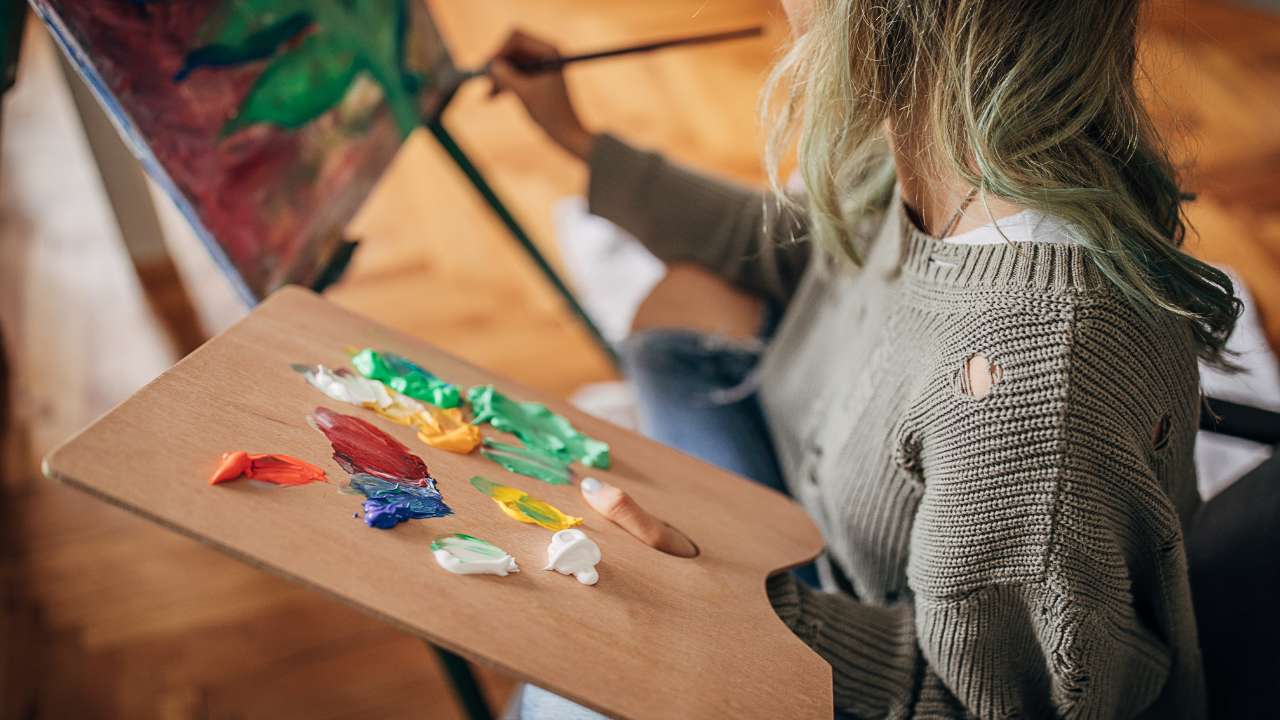Can You Make a Living as an Artist in Today’s World?

Introduction
The image of a starving artist toiling away in obscurity has long been a cultural stereotype. For centuries, art was seen as a passion, a calling, rather than a viable career. However, in today’s digital age, the perception of an artist’s livelihood is changing rapidly. With the rise of the internet, social media, and new monetization avenues, artists now have more opportunities than ever to turn their creative work into a sustainable career. The question remains: can you make a living as an artist in today’s world? The answer, while nuanced, is increasingly optimistic.
In this article, we’ll explore how the modern art world has evolved, the platforms and tools that offer new income possibilities, and the challenges artists still face. Ultimately, we’ll consider whether it’s truly possible to earn a living through artistic endeavors in the contemporary era.
The Changing Landscape of Art and Income
In the past, the path to becoming a successful artist was far more linear, though no less difficult. Artists relied on gallery representation, commissions, or teaching positions to generate income. If they were lucky enough to gain recognition, they could sell works through exhibitions or private collectors. This model worked well for a select few but left the majority struggling to gain any significant financial foothold.

Today, technology has revolutionized the way artists create, share, and sell their work. Digital platforms have emerged, allowing artists to reach audiences without the traditional gatekeepers of galleries or art dealers. Social media platforms like Instagram and TikTok have become virtual galleries, offering instant exposure to a global audience. Additionally, the digital art world has exploded with the advent of NFTs (Non-Fungible Tokens), where artists can sell ownership rights to digital works on blockchain platforms.
While traditional art forms still hold value, the democratization of art through technology has opened new doors for artists. A digital illustrator may find immense success selling prints online or creating bespoke commissions for fans via platforms like Patreon. Many artists are now blending traditional and digital methods, using social media as a marketing tool while continuing to sell physical works or take on gallery exhibitions.
Platforms and Opportunities for Artists
There is no shortage of platforms where artists can showcase their talents and monetize their work. Each platform offers unique benefits, and savvy artists often leverage multiple streams of income:
- Social Media (Instagram, TikTok, YouTube): Social media has become a powerful tool for artists to share their work and connect with fans and buyers. Instagram, in particular, is widely recognized as a hub for visual artists, allowing them to grow a following and showcase their portfolios. TikTok, with its short-form video content, has also gained popularity among artists for sharing tutorials, behind-the-scenes looks, and promotional content. YouTube offers an additional revenue stream through ad revenue and sponsorships, particularly for artists who create educational or entertainment content around their craft.
- Patreon and Subscription Models: Patreon offers artists a way to build a direct and supportive relationship with their audience. Through monthly subscriptions, patrons support artists in exchange for exclusive content, such as early access to works, personalized commissions, or tutorials. This model provides a steady, recurring income that can offer financial stability in the unpredictable world of freelance art.
- Freelance Platforms (Upwork, Fiverr): For artists willing to take on commissions or project-based work, freelance platforms offer access to a global marketplace of clients. These platforms allow artists to pitch their services for a wide range of projects, from illustration and graphic design to animation and digital painting.
- Online Marketplaces (Etsy, Redbubble, Society6): For artists who create physical or digital products, these platforms offer easy-to-use storefronts. Etsy, for instance, is known for its focus on handmade and original artwork, making it a popular platform for fine artists and crafters alike. Redbubble and Society6 allow artists to upload their designs, which are then printed on a variety of products like T-shirts, phone cases, and home décor, without needing to manage inventory or shipping.
- NFTs and Blockchain: Non-Fungible Tokens have generated significant buzz in the digital art world. Artists can now sell their digital works as unique, blockchain-certified items, giving buyers ownership in a way that’s never been possible before. This new frontier has allowed some artists to earn millions, though the NFT market remains volatile and is still evolving.
Challenges of Making a Living as an Artist
Despite the abundance of new platforms and opportunities, the life of an artist remains fraught with challenges. Income is often inconsistent, and artists must juggle creative work with the realities of self-promotion, marketing, and financial management.

- Income Instability: Unlike a regular 9-to-5 job, income for artists can fluctuate dramatically. One month might bring in several commissions or print sales, while the next could be a drought. This unpredictability requires careful financial planning and the ability to weather slow periods.
- Competition: The accessibility of digital platforms also means that the market is flooded with artists. Standing out from the crowd requires not only talent but also savvy marketing and often a unique niche. Artists must balance creating original work with ensuring it appeals to a market that can easily move on to the next creator.
- Creative Burnout: Constantly producing content, especially in the fast-paced world of social media, can lead to creative exhaustion. Artists may feel pressure to stay relevant by posting frequently, leading to burnout and the risk of losing passion for their craft.
- Financial Literacy: Many artists struggle with pricing their work appropriately, managing taxes, and planning for the future. Without a regular paycheck, artists must be vigilant in budgeting, saving, and understanding their financial responsibilities, which can be a steep learning curve for those focused primarily on the creative side.
Strategies for Financial Success as an Artist
To navigate these challenges, many artists have found success by diversifying their income streams and embracing both traditional and digital approaches. A few strategies can make a significant difference:
- Diversify Income Streams: Instead of relying solely on one source of income, successful artists often spread their efforts across multiple platforms. They might sell prints online, take commissions through Patreon, offer freelance work on Upwork, and use social media to drive traffic to all of these outlets.
- Building a Personal Brand: In the crowded world of art, standing out is crucial. Artists who succeed often have a distinctive style, niche, or personality that resonates with their audience. By cultivating a unique brand, they attract a loyal following that supports their work.
- Networking and Collaboration: Artists can benefit from collaborations with other creatives, influencers, or brands. Partnering with companies for promotional work, joining group exhibitions, or participating in online challenges can introduce an artist to new audiences.
- Financial Planning: Learning how to budget and save during high-earning months can prevent stress during slower periods. Artists may also want to consult with a financial advisor to ensure they’re setting themselves up for long-term success.

Is It Sustainable? The Long-Term Perspective
The reality of being a full-time artist is that it’s often not a fast path to financial stability. Success usually requires years of persistence, adaptability, and a willingness to evolve alongside trends. However, those who are passionate about their craft and willing to embrace both the creative and business sides of the profession have a higher chance of sustaining a living from their work.
In the long term, an artist’s career can be as rewarding as it is challenging. The key is to remain flexible, stay informed about new technologies and platforms, and continue building meaningful connections with audiences.
Conclusion
So, can you make a living as an artist in today’s world? The answer is yes—but it requires strategy, adaptability, and resilience.
The opportunities are there, more than ever before, thanks to digital platforms and new revenue models like Patreon and NFTs. However, these opportunities come with unique challenges, from income instability to burnout.
For those committed to their craft, today’s world offers a multitude of ways to turn art into a career. By embracing a combination of digital tools, financial planning, and personal branding, artists can carve out a living in this ever-evolving landscape. While it may not be an easy journey, it’s more possible now than ever before to thrive as a full-time artist.
Did you find this post Helpful or Inspiring? Save THIS PIN to your PAINT Board on Pinterest!


You might also enjoy these articles: